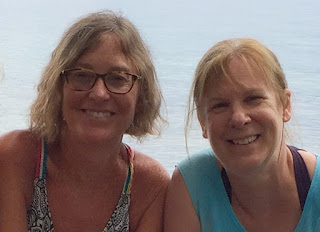In honor of the start of school, I
thought it would be interesting to share my conversation with a teacher about creativity in the classroom. My friend, Dr. Joyce Raines, is a middle school teacher in Massachusetts
who has been instrumental in establishing the S.T.E.A.M. curriculum in her
school.
So, Joyce, please explain the term
S.T.E.A.M.
The
term STEAM is an acronym. It stands for Science, Technology, Engineering, Art
and Math. To begin with, schools created STEM (without the A) to make
up for areas in which American students were falling behind, compared to their
counterparts in other countries. As a result, many technological jobs were (and
still are) being filled by people from
countries such as India and China. STEM education has become a hot item in high
schools in this country.
Wait… did you just say that STEAM is hot? (giggle) And this is a way to get students interested in learning?
Yes,
and now many elementary schools have added Art,
since the creative thinking process that art evokes can be applied to problem
solving in science, technology, engineering and math.
This is, in many
ways, a reaction to standardized testing. For years, schools
created curriculum that was geared toward preparing kids to take
standardized tests. Teachers were under a lot of pressure to have their
students perform well. There was not a lot of creativity, problem solving, or
"thinking outside the box." Students were not actively engaged
in their own learning.
How did you get interested in moving
over to this kind of program from the traditional classroom?
I was
a regular classroom teacher for about 17 years. I taught sixth grade science
for about 14 of those years. I liked my job; the best thing was creating
hands-on problem-solving lessons for my students and watching them become
actively engaged. But it wasn't enough. I could tell that many of my students
weren't developing the skills needed to be lifelong learners: passion,
creativity, perseverance, the ability to collaborate with others.
I
wrote to my superintendent asking him if he could create a position for me in
which I could develop a hands-on science curriculum for all of the students in
my school. At the end of that year, I found out that my school was going to
gain a STEM teacher position. This would be a regular specialist position, just
like art, music and physical education, that each student would attend once per
week. I applied for the position and got it. I then had to develop the
curriculum and order a lot of hands on materials.
The way you tell it, I get a sense of the creative juices beginning to flow...



.jpg)
Comments
Post a Comment